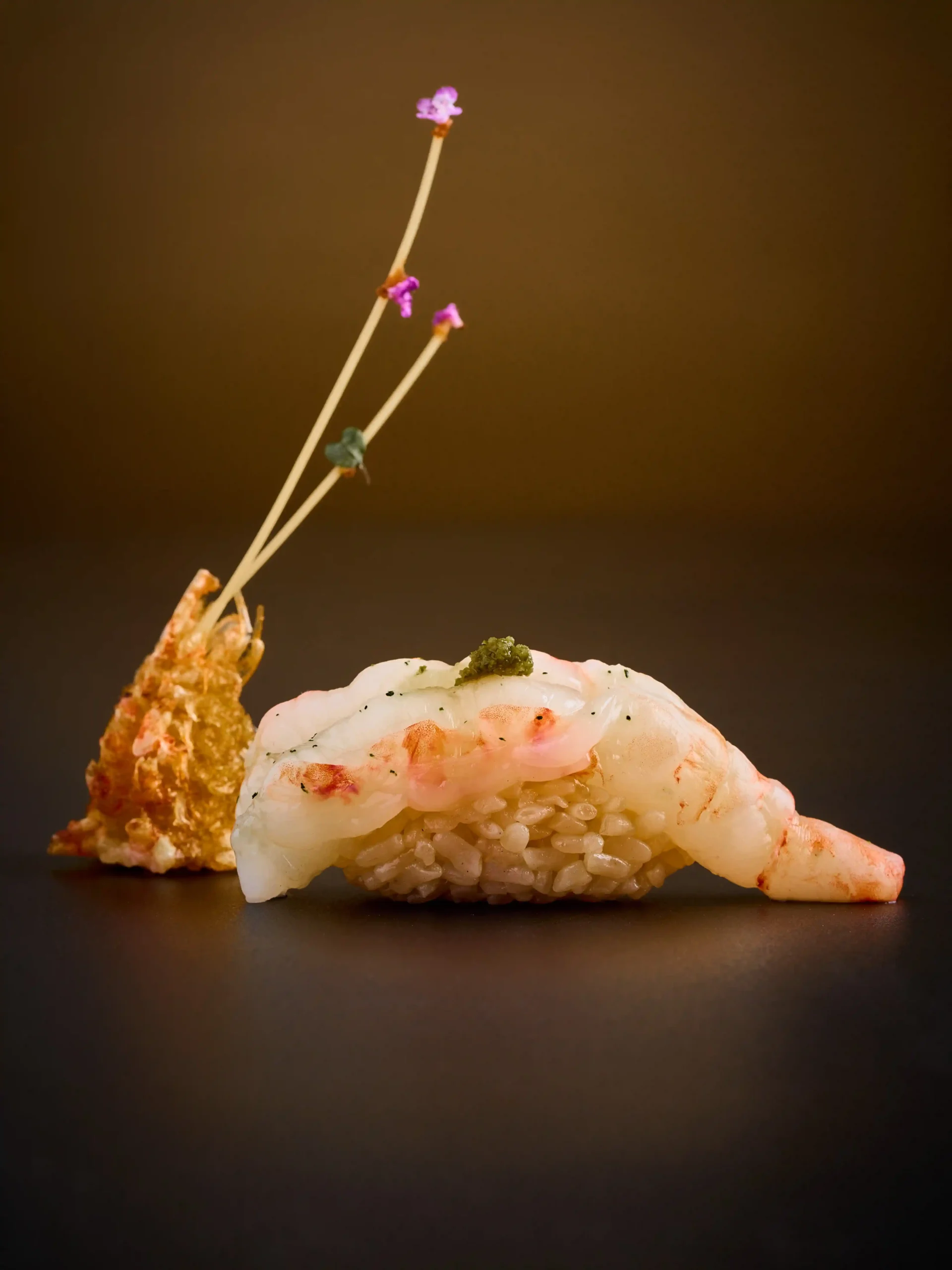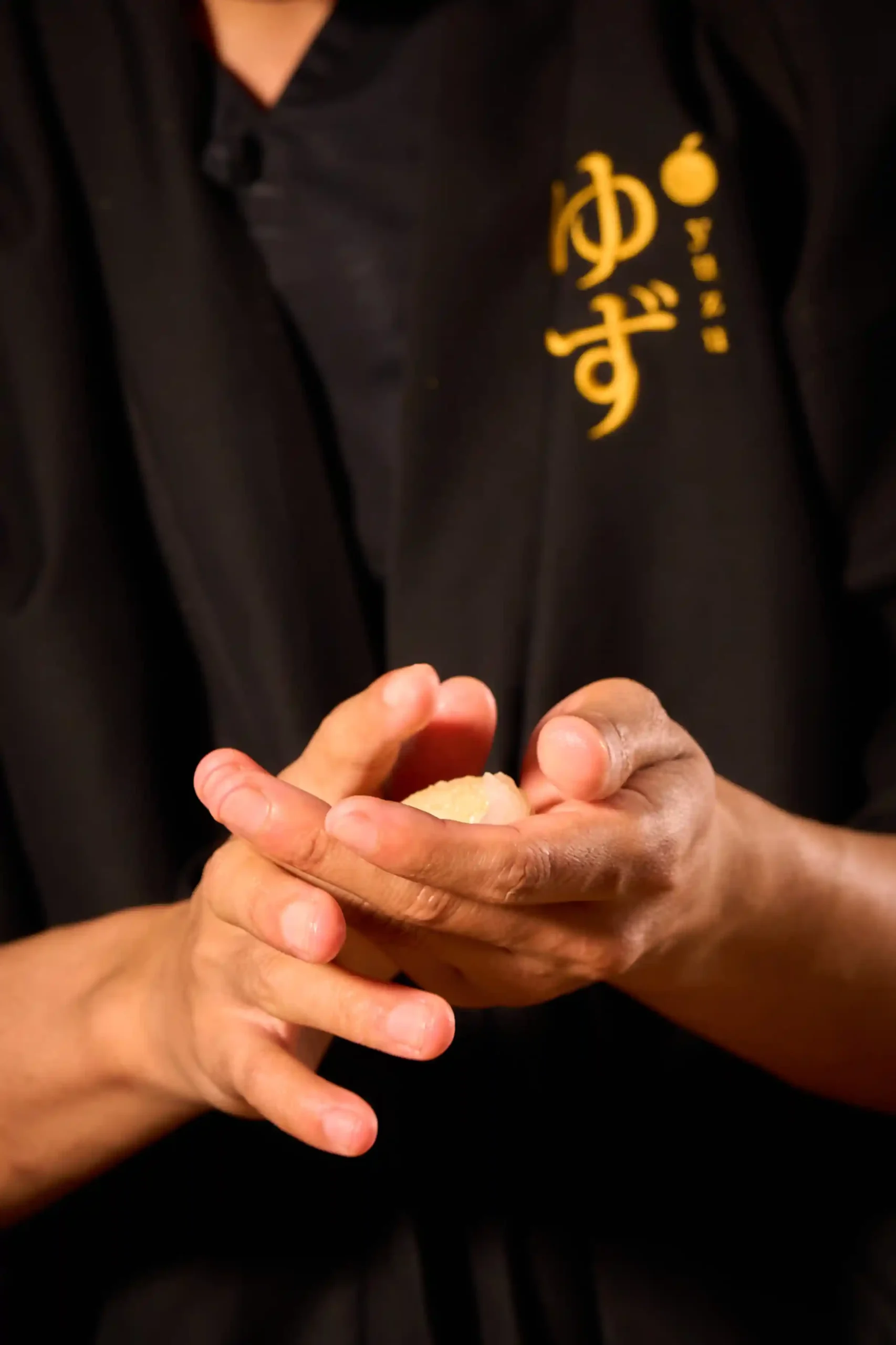
Botan Ebi (Peony Shrimp) How to Enjoy
Ask for Botan ebi at a serious sushi counter and watch the chef’s eyes brighten—this peony-named shrimp (ぼたんえび) represents one of sushi’s most elegant expressions of oceanic sweetness. Larger and more luxurious than its cousin amaebi, Botan ebi delivers a firmer bite and richer sweetness that transforms a simple nigiri into an event. What is… Continue reading Botan Ebi (Peony Shrimp) How to Enjoy
Local Story ● 2025 Sep 12
Ask for Botan ebi at a serious sushi counter and watch the chef's eyes brighten—this peony-named shrimp (ぼたんえび) represents one of sushi's most elegant expressions of oceanic sweetness. Larger and more luxurious than its cousin amaebi, Botan ebi delivers a firmer bite and richer sweetness that transforms a simple nigiri into an event.

What is Botan Ebi?
Botan ebi, literally "peony shrimp" in Japanese, refers to the spot prawn (Pandalus nipponensis) served raw in Japanese cuisine. These cold-water prawns typically measure 15-20cm, dwarfing the more common amaebi by nearly double. Their translucent flesh carries a pronounced sweetness with subtle briny notes, balanced by a pleasantly firm texture that yields without chewiness.
The most prized specimens come from two sources: Japan's Hokkaido waters and Toyama Bay, where frigid currents create ideal conditions for developing the shrimp's signature sweetness. Canadian spot prawns from British Columbia waters offer a comparable quality, often appearing in North American omakase menus during peak season. The "peony" moniker reflects both the shrimp's pinkish hue when cooked and its premium status—peonies symbolize wealth and honor in Japanese culture.
High-end sushi bars feature Botan ebi as a centerpiece nigiri, often butterflied to showcase its impressive size and paired with its deep-fried head. During omakase service, it typically appears mid-meal, bridging lighter white fish and richer pieces like uni or ikura.

Botan Ebi vs. Amaebi (Sweet Shrimp)
Taste & Texture
At its best, uni has a sweet, briny, umami-rich flavor with a soft custard-like texture. Fans often describe it as oceanic yet creamy, sometimes compared to foie gras or oysters.When uni is bad, it tastes bitter, metallic, or ammonia-like and may feel slimy. This is why freshness is key—uni can either be a luxurious delicacy or an unpleasant surprise.
While both shrimp deliver sweetness, Botan ebi offers a more complex flavor profile. Its sweetness registers deeper and rounder, with subtle mineral notes absent in amaebi. The texture difference proves even more dramatic—Botan ebi maintains a satisfying firmness that contrasts with amaebi's almost creamy dissolution. Think of amaebi as delicate silk; Botan ebi as luxurious satin with more substance.
Size & Presentation
Botan ebi's impressive size allows chefs to butterfly the flesh across nigiri rice, creating a dramatic presentation impossible with smaller amaebi. A single Botan ebi yields enough meat for 1-2 pieces of nigiri, while amaebi typically requires 2-3 shrimp per piece. The larger Botan ebi head also fries up magnificently, offering substantial crispy bites versus amaebi's more delicate fried heads.

When to Choose Each
Order Botan ebi when you want a statement piece—its bold sweetness and substantial texture work best as a featured course. Choose amaebi for subtle sweetness that won't overshadow delicate fish in a progression. Budget-conscious diners should note Botan ebi typically costs 30-50% more than amaebi, reflecting its larger size and relative scarcity.
How Chefs Serve It?
Master sushi chefs handle Botan ebi with particular reverence. The raw preparation begins with careful peeling, preserving the tail for visual appeal. Many chefs butterfly the flesh lengthwise, creating an elegant drape over slightly warm shari (sushi rice). Some lightly score the surface to enhance texture and sauce adhesion.
The head never goes to waste—dusted with potato starch and deep-fried until golden, it becomes a crunchy counterpoint to the silky raw flesh. Timing matters: the best chefs fry heads to order, ensuring maximum crispness. Some establishments serve the roe separately as gunkan-maki (battleship roll), though peak-season females may have their roe left attached for added richness.
Optimal serving occurs within 24-48 hours of catch for domestic Japanese specimens. Frozen Botan ebi, when properly handled, maintains quality remarkably well—many high-end establishments rely on flash-frozen Canadian spot prawns during off-seasons.

Seasonality, Sourcing & Quality
Japanese Botan ebi peaks from late fall through early spring, with December through February offering prime specimens. Hokkaido's harvest runs October through March, while Toyama Bay's season extends slightly later. Canadian spot prawns follow an inverse schedule, peaking May through June, providing year-round availability for informed buyers.
Quality indicators include translucent flesh with no milky spots, intact shells without black spots, and a sweet ocean scent free from ammonia notes. Sustainability-minded diners can feel confident—both Japanese and Canadian fisheries maintain healthy populations through strict quota management. Look for Marine Stewardship Council certification when buying retail.
Fresh specimens command premium prices at auction, but flash-freezing technology has democratized access. Properly frozen Botan ebi, caught and processed at sea, often surpasses "fresh" prawns that spent days in transit.
Ordering & Buying Tips
At Restaurants: Quality Botan ebi nigiri exhibits these characteristics:
- Translucent, glossy flesh without dry edges
- Proper butterflying that showcases size without tearing
- Rice temperature warm enough to contrast cold shrimp
- Optional shiso leaf or light wasabi accent
- Fried head served immediately, still crackling
Chef's tip: Request your Botan ebi toward the meal's middle—its sweetness overwhelms if served too early but gets lost after strong flavors like uni.
For Home Purchase: Seek "sashimi-grade" or "sushi-quality" labels at Japanese markets. Frozen products labeled "spot prawns" offer identical quality to those marked "Botan ebi." Expect to pay $40-80 per pound for premium frozen specimens. Thaw overnight in the refrigerator, never at room temperature or under running water.
Buyer's tip: IQF (individually quick frozen) prawns in vacuum-sealed portions offer better quality than bulk-frozen blocks—you can thaw only what you need.
Price ranges vary dramatically: expect $15-30 per piece at high-end sushi bars, $8-15 at neighborhood spots. Retail frozen prawns run $25-60 per pound depending on size and source.

FAQs
Is Botan ebi safe to eat raw? When properly sourced and handled, yes. Purchase only from reputable suppliers offering sashimi-grade products. Home freezing doesn't guarantee parasite elimination—trust commercial processing.
Why do chefs fry the head? The head contains flavorful oils and delicate meat that crisps beautifully when fried. It's both zero-waste philosophy and textural contrast—the crunch amplifies appreciation for the raw flesh's silkiness.
Can I substitute amaebi for Botan ebi? While both offer sweetness, they're distinct experiences. Use 2-3 amaebi to approximate one Botan ebi's volume, but expect softer texture and milder flavor.
What's the orange stuff (roe)? Female Botan ebi carry external roe during breeding season. These eggs offer briny pops of flavor, often served separately as gunkan-maki or left attached for visual impact.
Why such price variation? Size, seasonality, and source create price swings. Peak-season Hokkaido specimens command top dollar, while off-season Canadian frozen prawns offer relative value.
📍 Yuzu Omakase Thailand 2F, 258/9-10 Siam Square Soi 3, Pathumwan, Bangkok
📞 Phone: 063-898-8989
RELATE
-
Why Aging Fish Makes Omakase Taste Better?
Aging fish for omakase enhances both texture and flavor through enzymatic breakdown of proteins, creating deeper umami notes and a tender texture that pairs seamlessly with sushi rice. Unlike fresh fish which can be overly firm, aged fish develops complex flavors over 3-30 days through controlled temperature and humidity. Benefits of Aged Fish in Omakase… Continue reading Why Aging Fish Makes Omakase Taste Better?
Local Story ● 2025 Dec 4
-
Omakase Etiquette: Complete Guide to Japanese Fine Dining Protocol
Omakase etiquette centers on respecting the chef’s craft through punctuality, eating sushi immediately when served, and avoiding strong fragrances. Trust the chef’s selection, eat each piece in one bite, and maintain quiet conversation to preserve the intimate dining atmosphere. What is Proper Omakase Etiquette? Omakase etiquette encompasses behavioral protocols that honor Japanese culinary tradition and… Continue reading Omakase Etiquette: Complete Guide to Japanese Fine Dining Protocol
Local Story ● 2025 Dec 4
-
Kaiseki vs Omakase: Understanding Japanese Dining Experiences
When exploring Japanese fine dining, two prestigious culinary traditions stand at the pinnacle: kaiseki and omakase. Understanding the differences between kaiseki vs omakase helps discerning diners choose the perfect experience for special occasions, whether celebrating anniversaries, entertaining clients, or seeking cultural immersion through extraordinary cuisine. What is Kaiseki? Kaiseki is Japan’s most formal multi-course dining… Continue reading Kaiseki vs Omakase: Understanding Japanese Dining Experiences
Local Story ● 2025 Dec 4
-
Get to Know Nigiri Sushi: The Art of Hand-Pressed Perfection
What is Nigiri Sushi? Nigiri is a type of sushi consisting of an oval-shaped, hand-pressed mound of vinegared rice topped with a thin slice of raw fish or seafood. The word “nigiri” means “to grasp” or “to squeeze,” referring to the way the sushi chef shapes the rice with their hands. Key Facts: Understanding Nigiri:… Continue reading Get to Know Nigiri Sushi: The Art of Hand-Pressed Perfection
Local Story ● 2025 Dec 4







